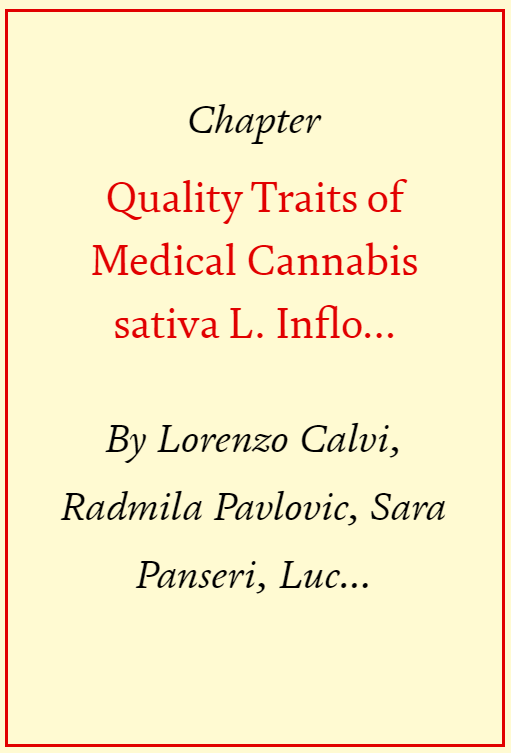MENUMENU

Research > Scientific Contributions
Calvi L., Pavlovic R., Panseri S., Giupponi L., Leoni V., Giorgi A.
Cannabis sativa L. has been cultivated throughout the world for industrial and medical purposes and is the most controversial plant ever exploited, with considerable discrepancies in the praise and disapproval it receives. Medical Cannabis prescriptions are on the increase in several countries where its therapeutic use is authorised due to its positive role in treating several pathologies even if it represents a multifaceted reality in terms of application. There are at least 550 identified compounds in C. sativa L., including more than 100 phytocannabinoids and 120 terpenes. The chemical complexity of its bioactive constituents highlights the need for standardised and well-defined analytical approaches able to characterise plant chemotype and herbal drug quality as well as to monitor the quality of pharmaceutical cannabis extracts and preparations. This research highlights the potential of using different analytical procedures involving the combination of headspace-solid-phase microextraction (HS-SPME) coupled to GC–MS and accelerated solvent extraction (ASE) coupled to high resolution mass-spectrometry (HPLC-Q Orbitrap®) for the in-depth profiling of quality traits in authorised medical varieties of Cannabis sativa L. flos (Bediol®) and corresponding macerated oil preparations. This approach could add new knowledge to the field of “omic” analytical applications which are fundamental nowadays for Cannabis used for therapeutic remedies.
